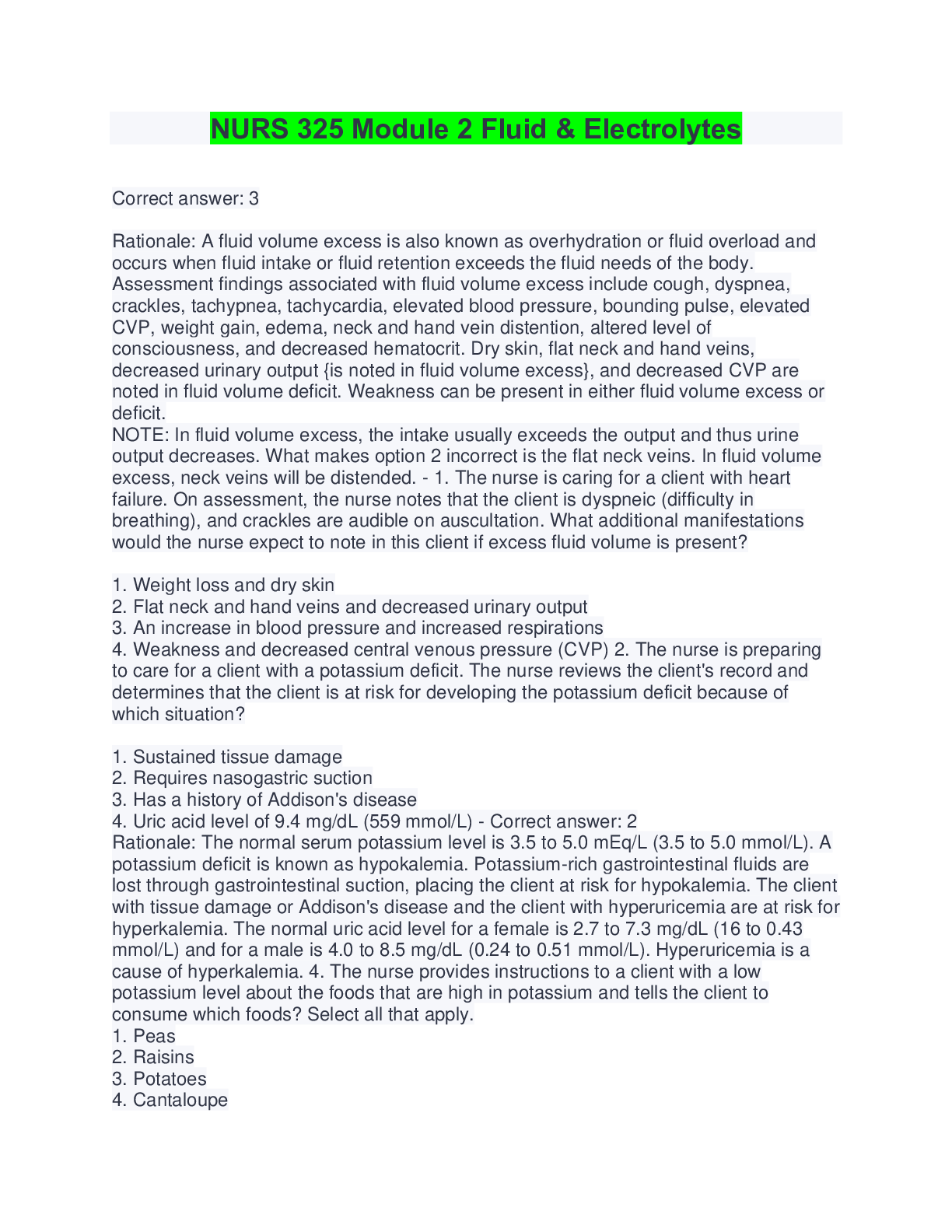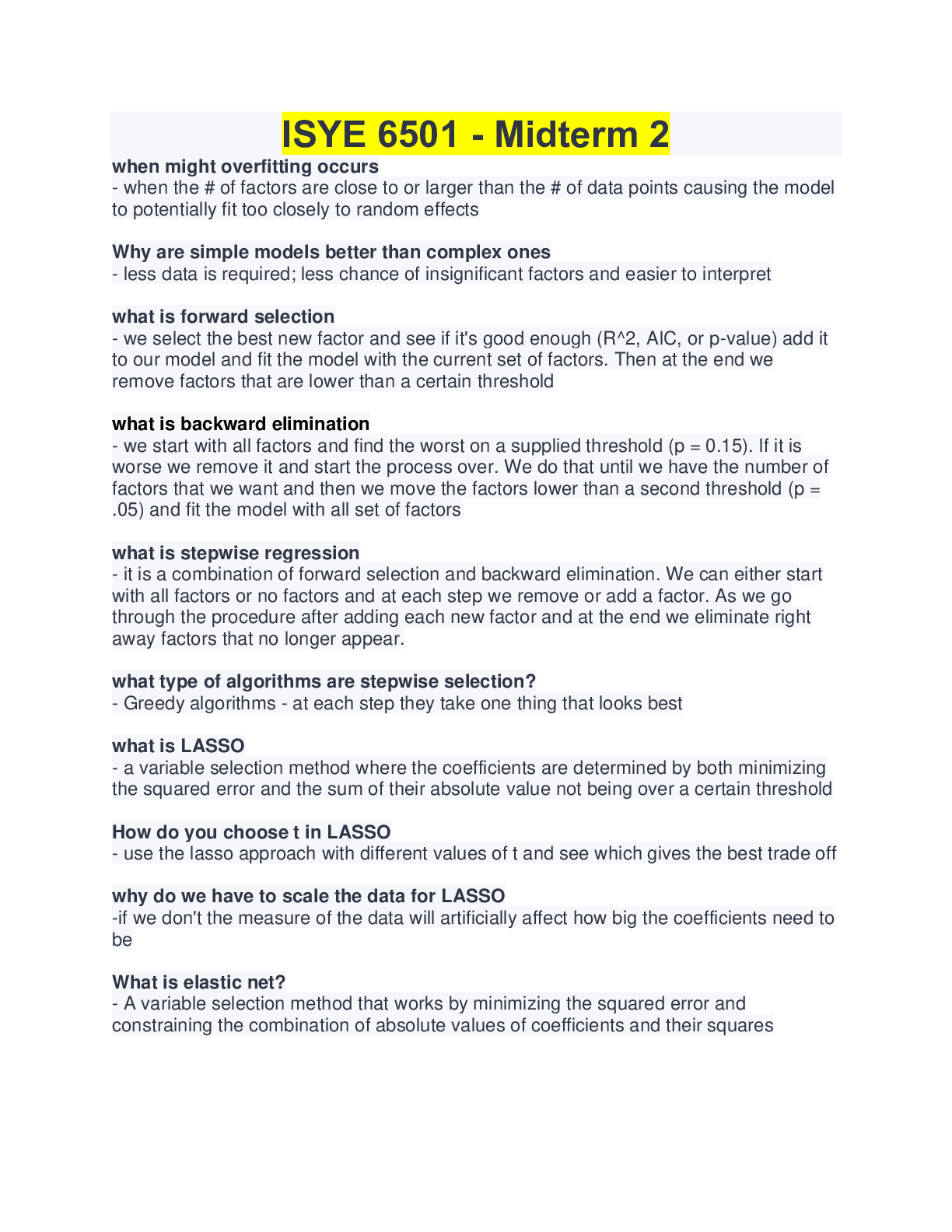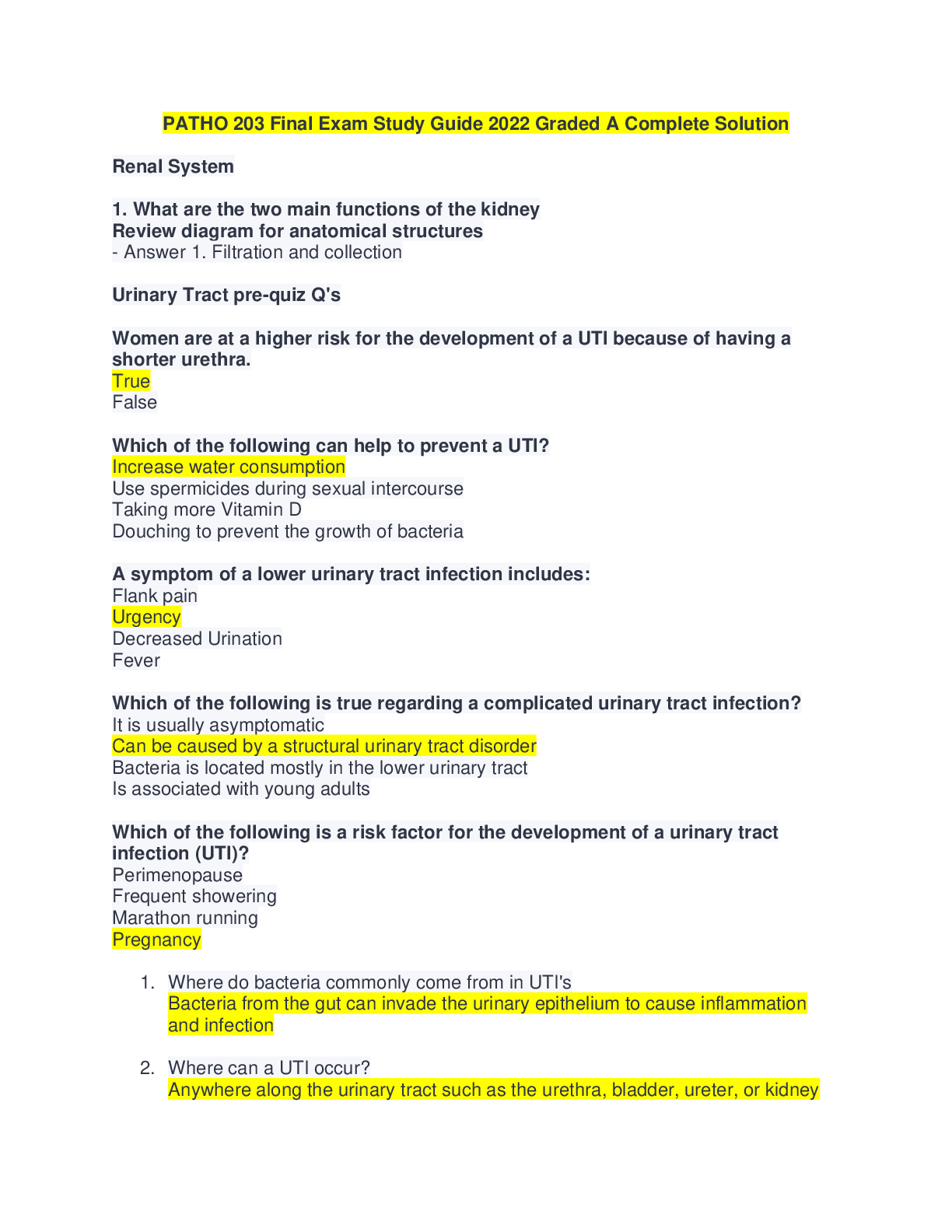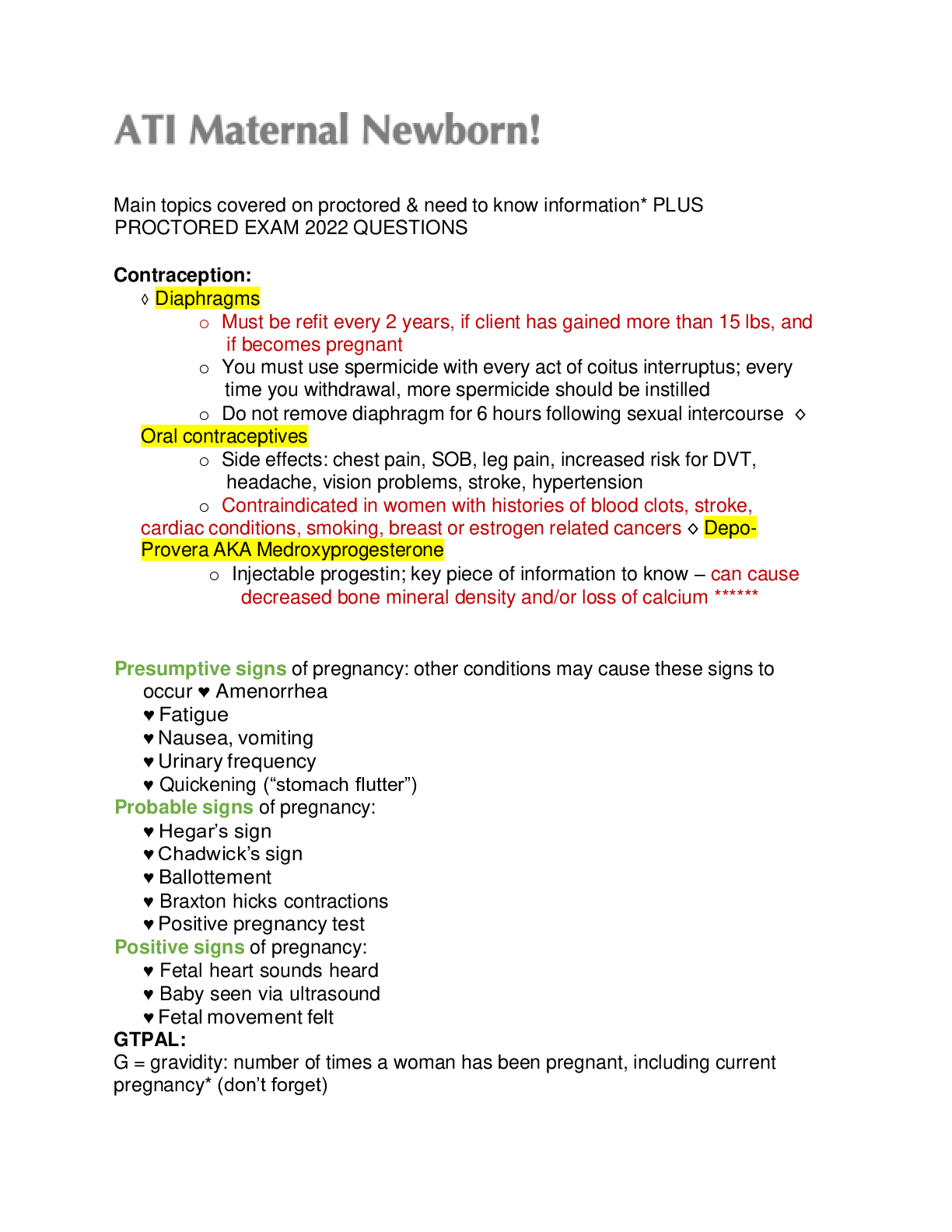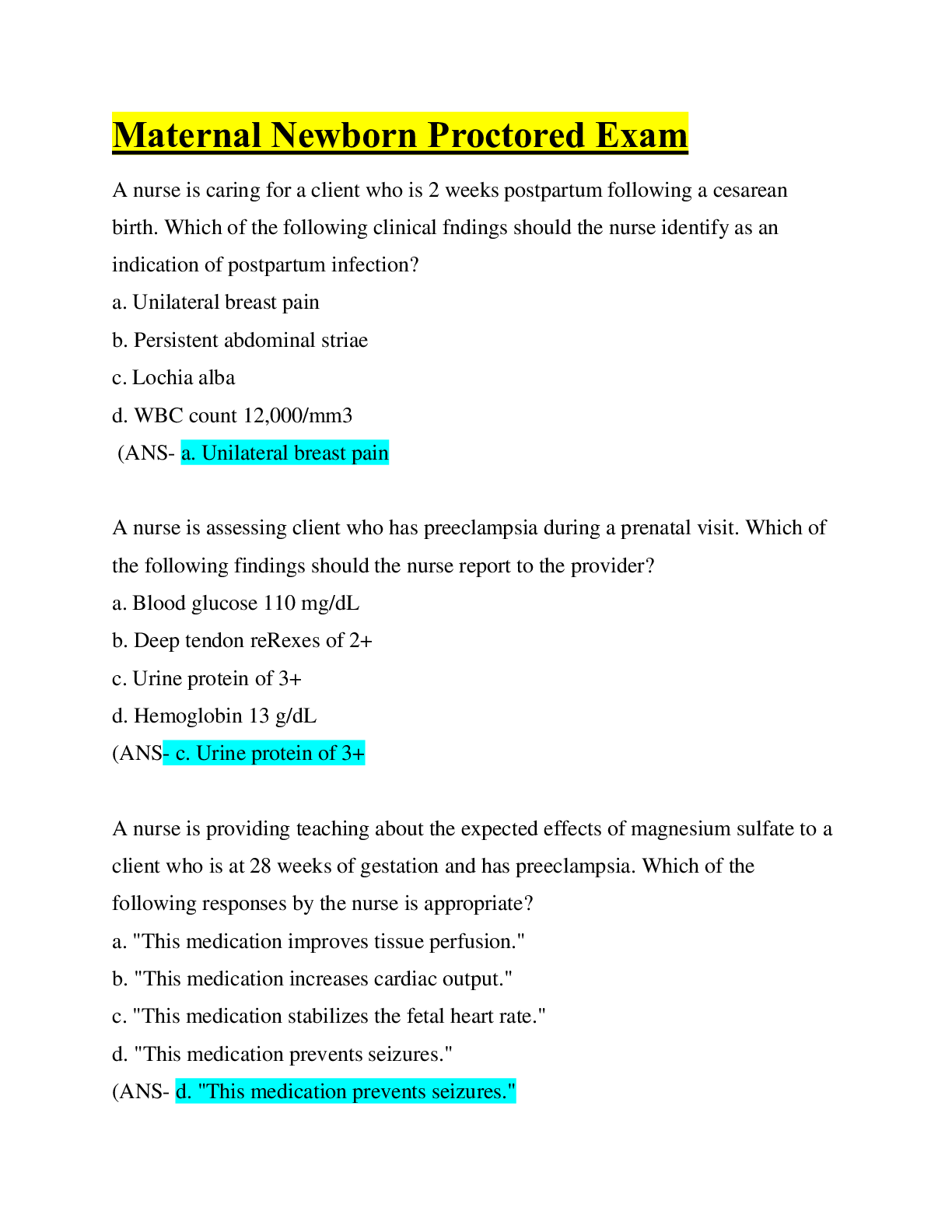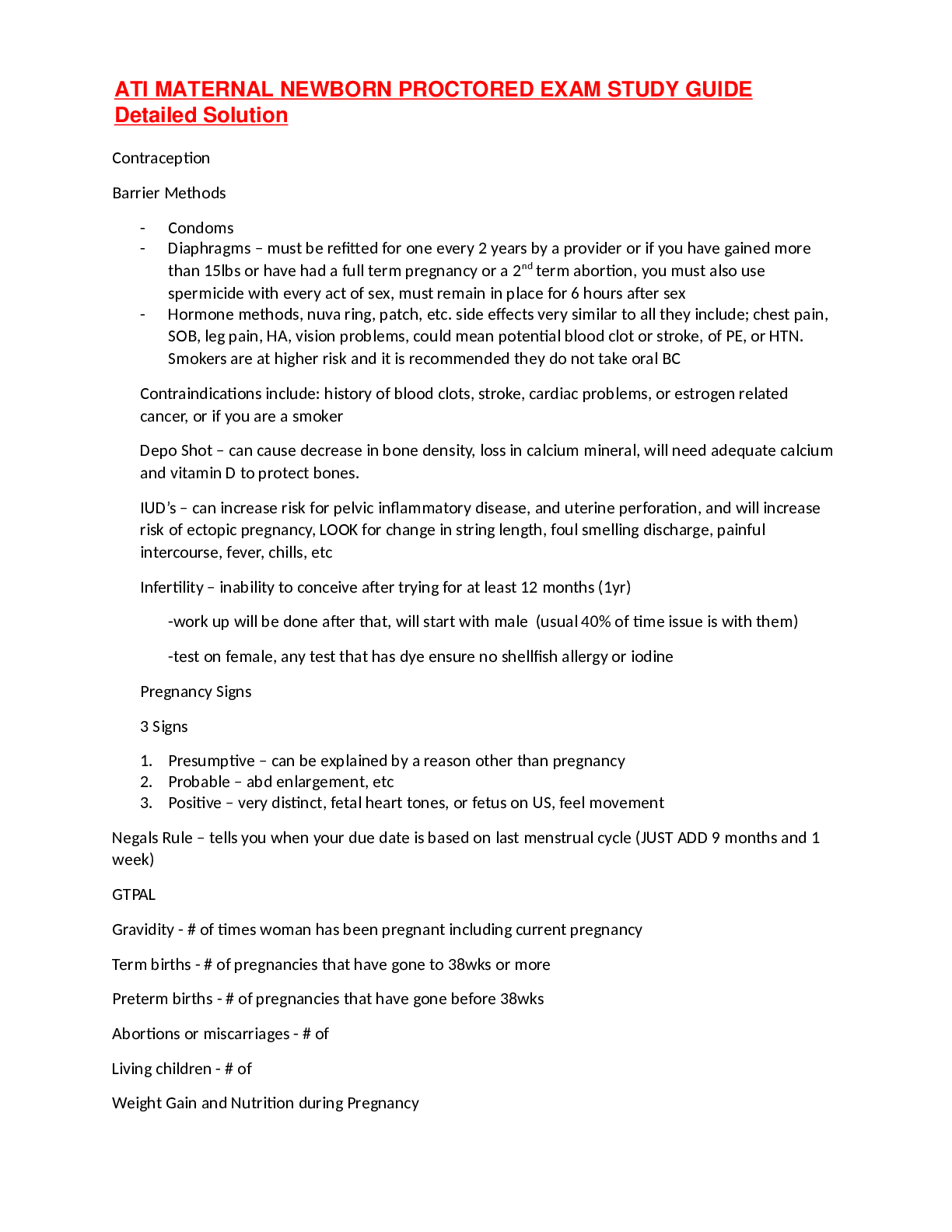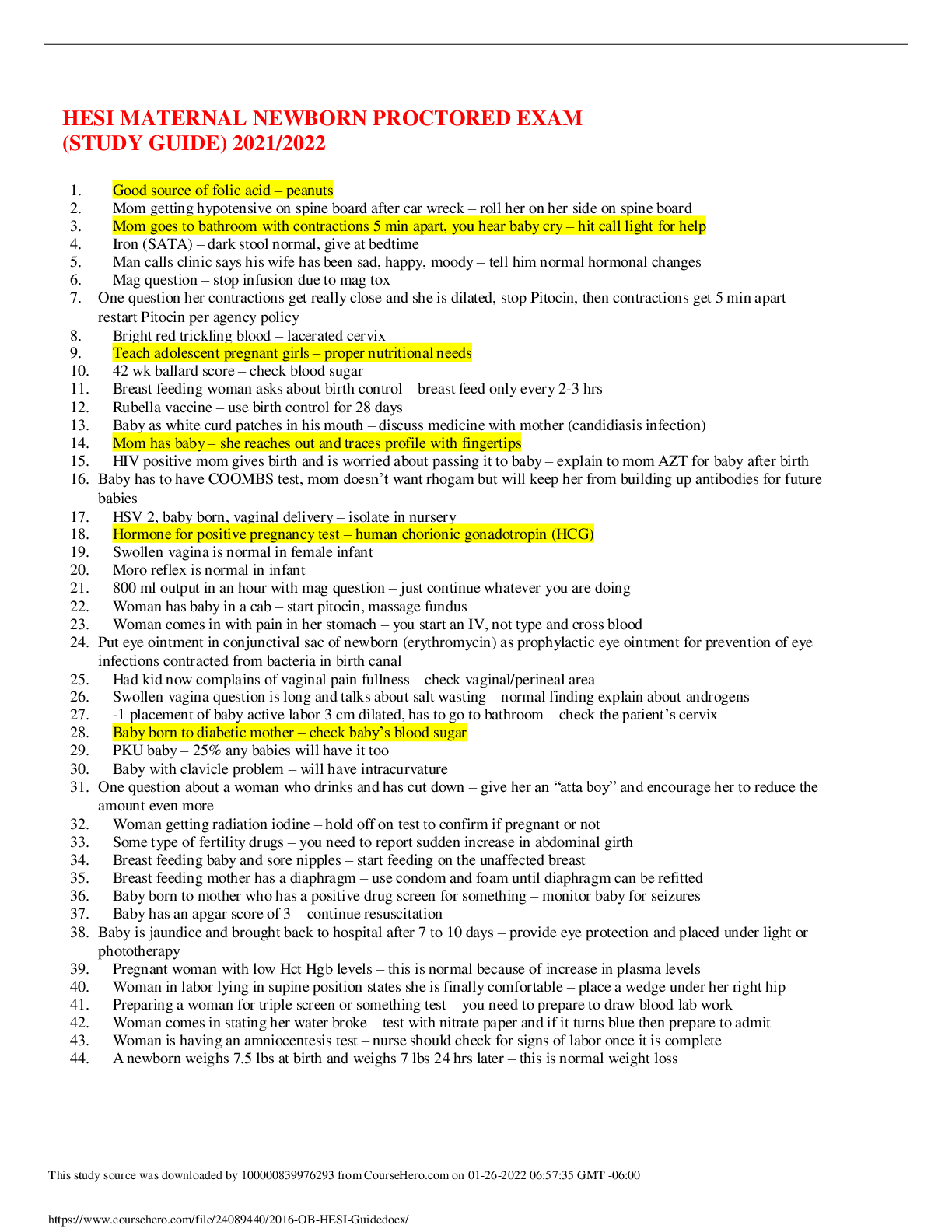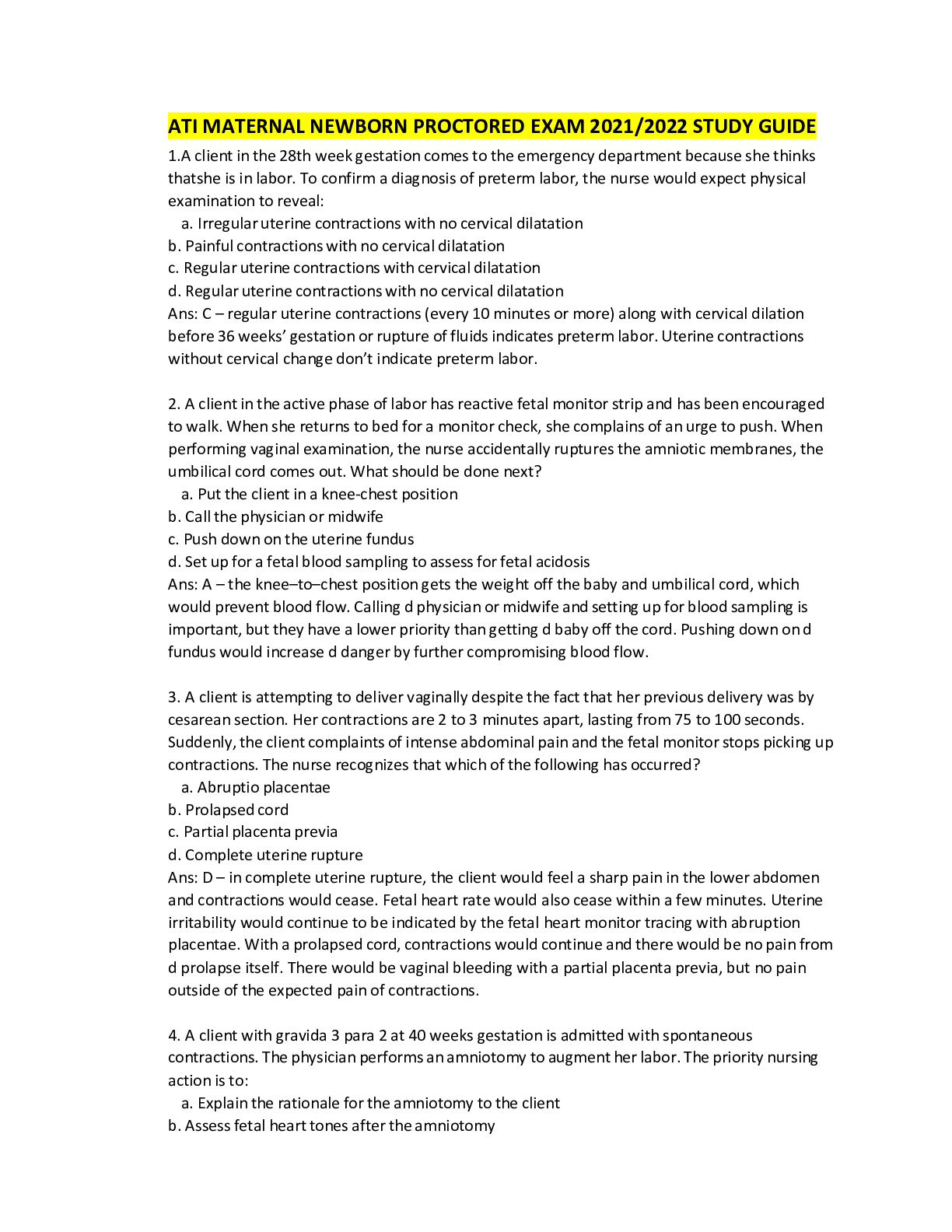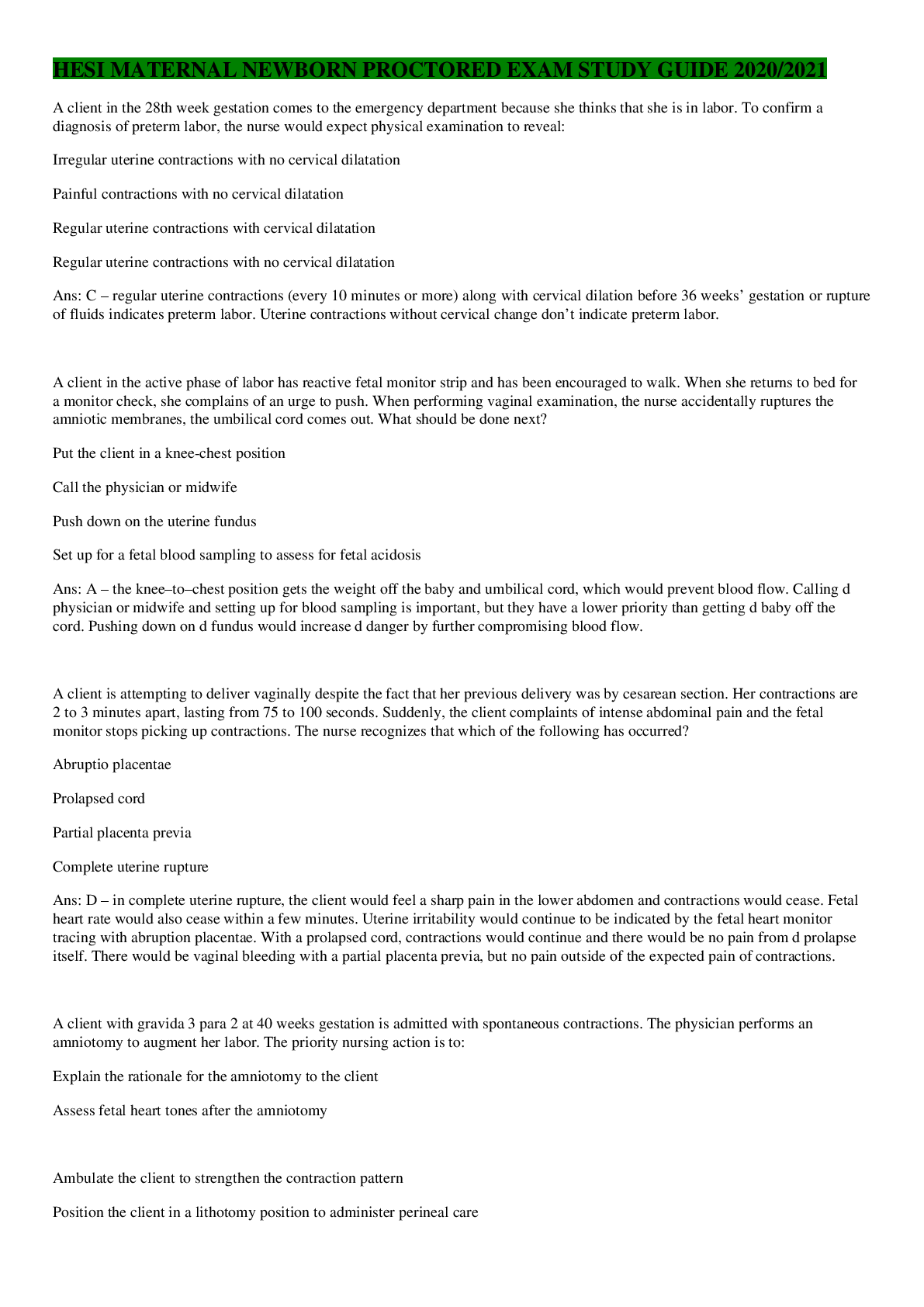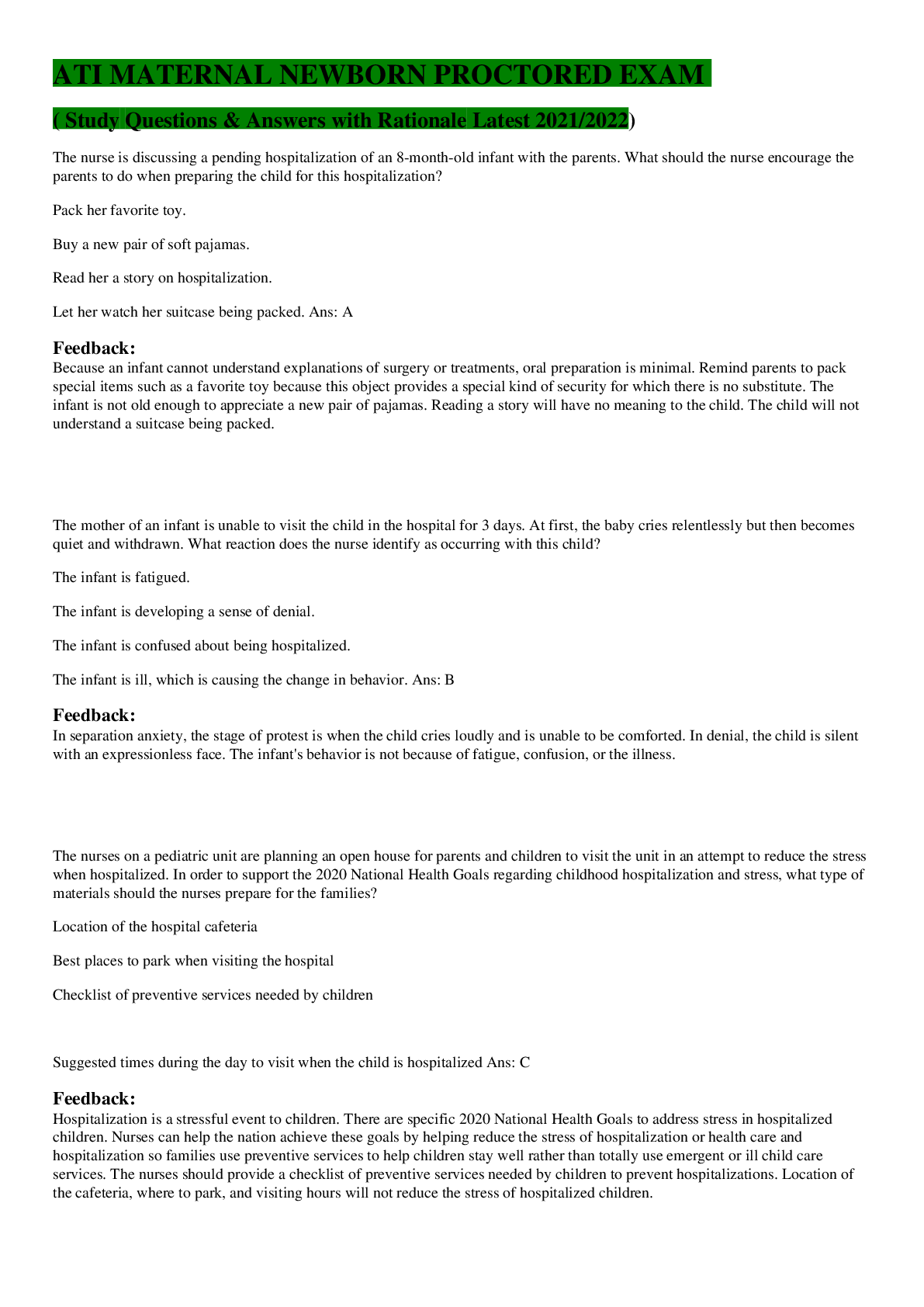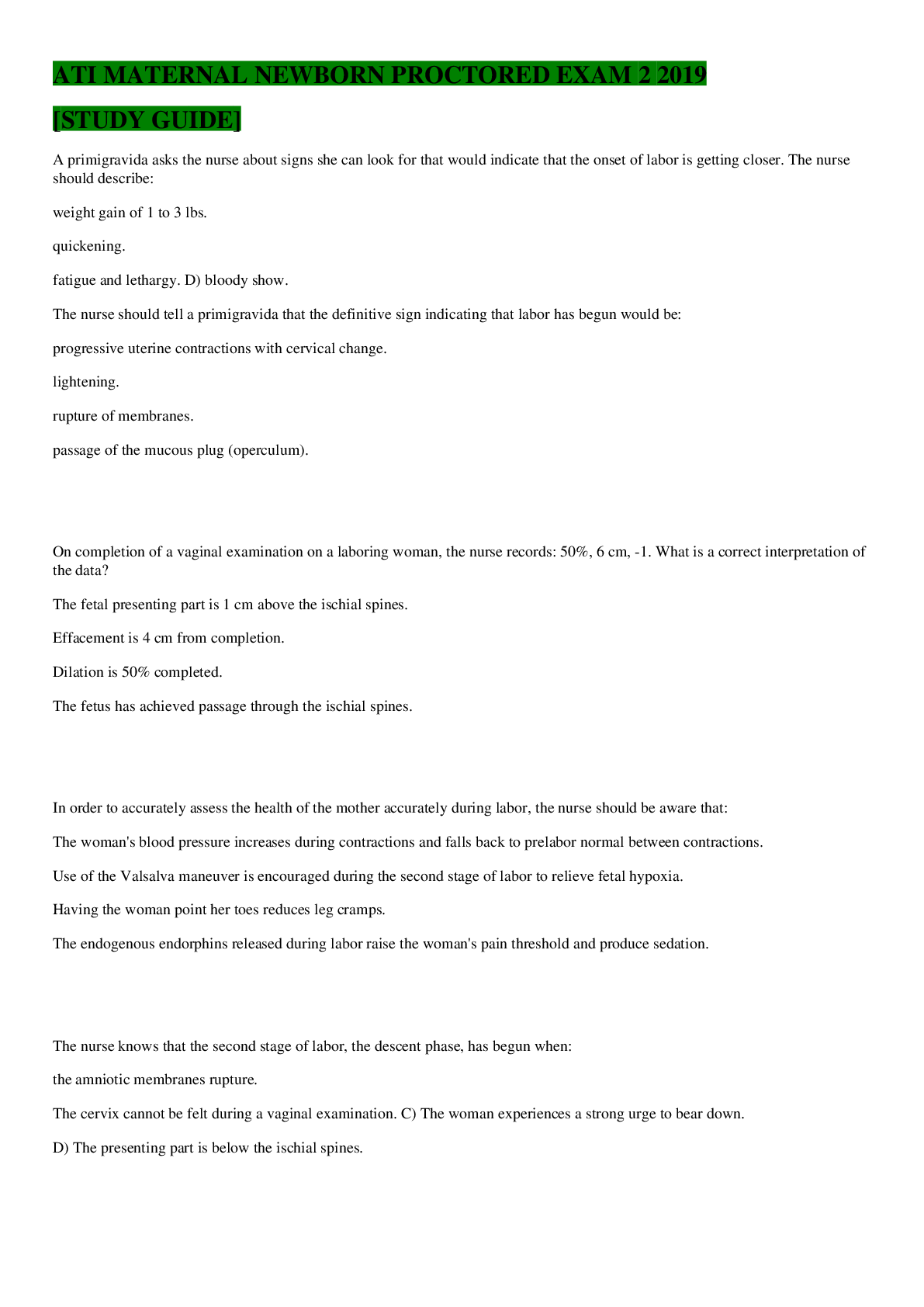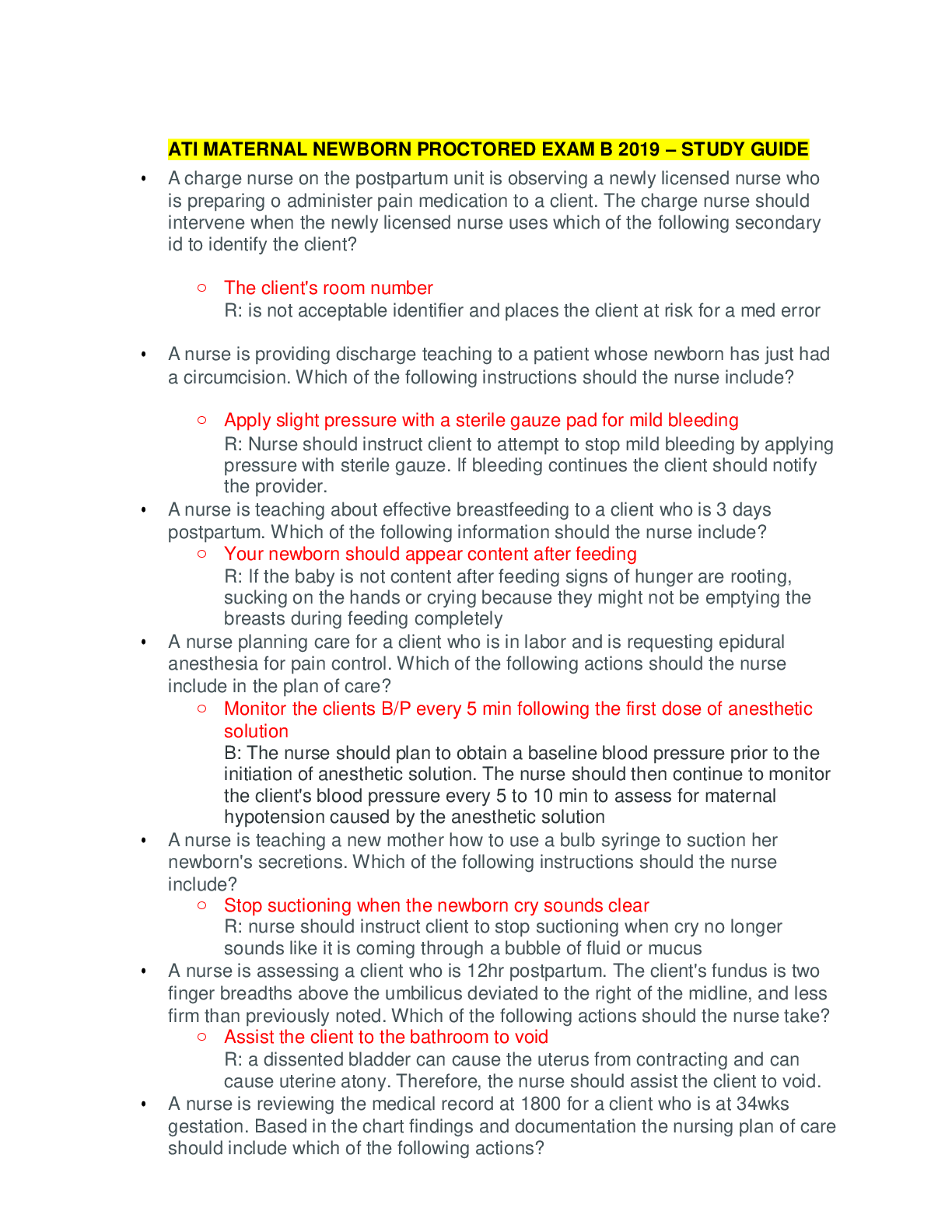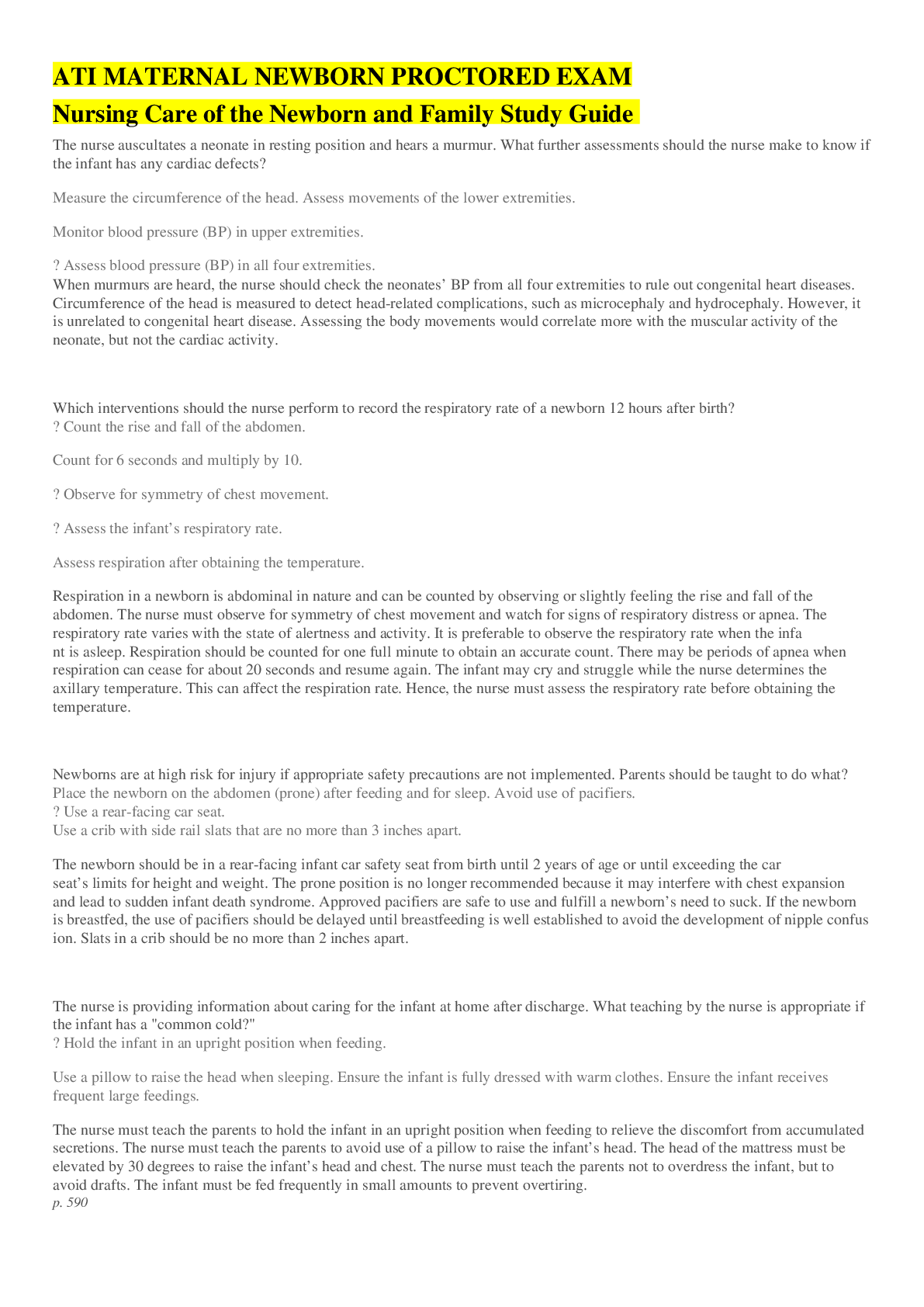*NURSING > STUDY GUIDE > ATI Maternal Newborn Proctored Exam 2021 (All)
ATI Maternal Newborn Proctored Exam 2021
Document Content and Description Below
50. During active labor, after a sudden slowing of the fetal heart rate, the nurse assesses the woman's perineum and observes a prolapsed cord. Which nursing action is most appropriate? Correct: Wit... h a sterile gloved hand, the nurse should push the presenting part away from the cord, thus preventing cord compression. The cord supplies the fetus with oxygen and nutrients. The fetus is already showing signs of distress because of the slowing of the heart rate. In addition, the nurse should prepare for immediate delivery. Incorrect: Since the head is not engaged (which is why the cord prolapsed), it will be very difficult to insert a scalp electrode.Incorrect: Trendelenburg position places the client with her head lower than her feet. Reverse Trendelenburg places the client with the head higher than the feet. Due to gravity, this will place additional pressure on the cord. Incorrect: Covering the cord with a dry gauze will not help the situation. The gauze will get wet in a matter of seconds. There is a risk that the gauze will be lost internally. Hold the presenting part away from the cord. Insert a scalp electrode for an internal fetal monitor. Place the client in reverse Trendelenburg position. Cover the cord with a dry, sterile gauze. 51. A client is in the latent stage of labor. Which nursing intervention is most appropriate? Correct: Latent stage is an early stage of labor, which begins with the onset of contractions and ends when the cervix is dilated to 4 cm. Walking adds gravity to the force of the contractions, promotes fetal descent, and relieves backache. Once the membranes rupture, bed rest may be indicated, for example if the fetal head is not engaged. Incorrect: Pushing is not indicated until full cervical dilation. Incorrect: This type of breathing pattern is used late in labor when pushing begins. Incorrect: Once labor begins fluids and ice chips are preferred. Nausea and vomiting are common as labor progresses. During labor, peristalsis stops. Therefore, having food in the stomach is not advisable. Encourage the client to walk in the hall until membranes rupture. Instruct the client to place her head on her chest and push with the contraction. Teach the client to use the “pant-blow” method of breathing. Advise the client to eat a light meal consisting of carbohydrates. [Show More]
Last updated: 2 years ago
Preview 1 out of 114 pages
.png)
Buy this document to get the full access instantly
Instant Download Access after purchase
Buy NowInstant download
We Accept:

Reviews( 0 )
$7.00
Can't find what you want? Try our AI powered Search
Document information
Connected school, study & course
About the document
Uploaded On
Aug 09, 2021
Number of pages
114
Written in
Additional information
This document has been written for:
Uploaded
Aug 09, 2021
Downloads
1
Views
88

